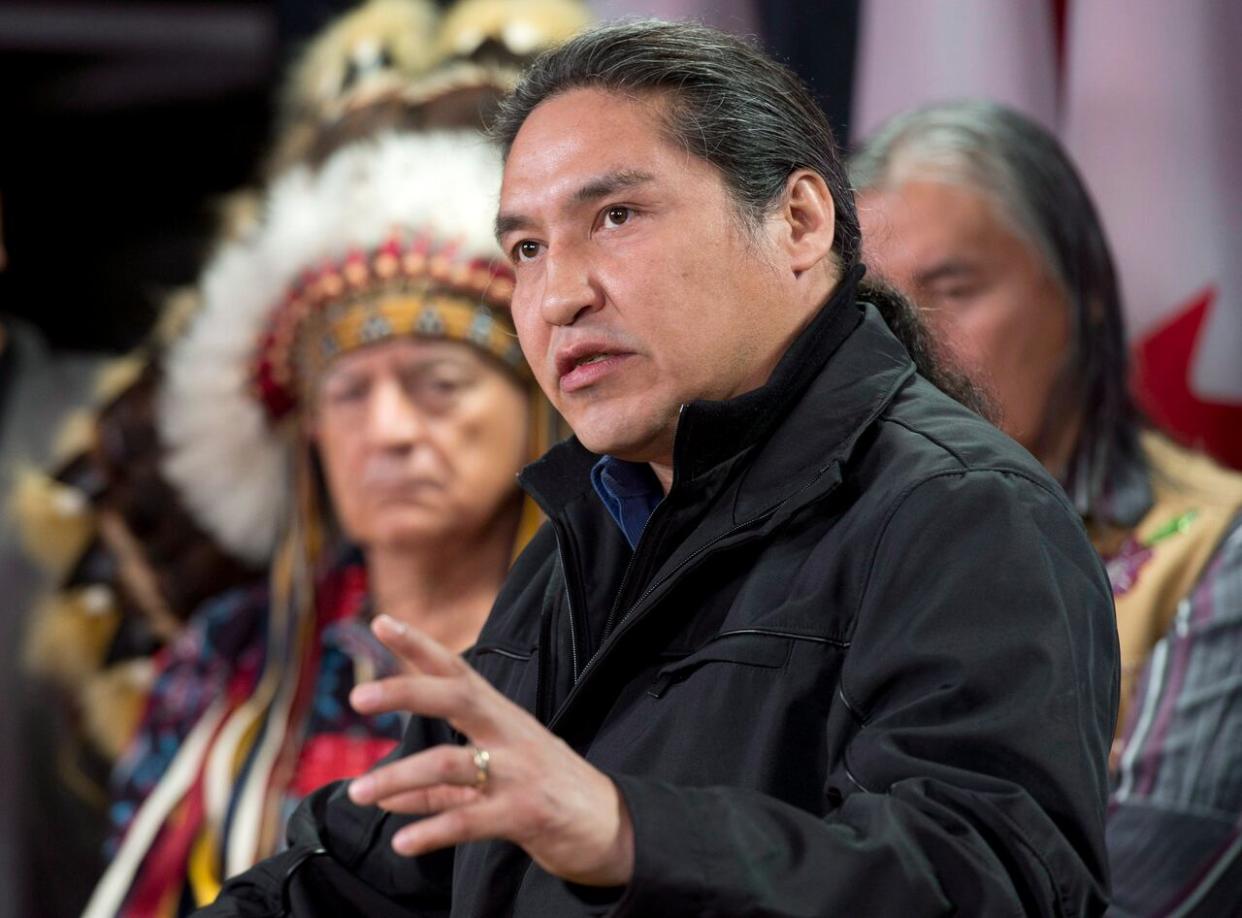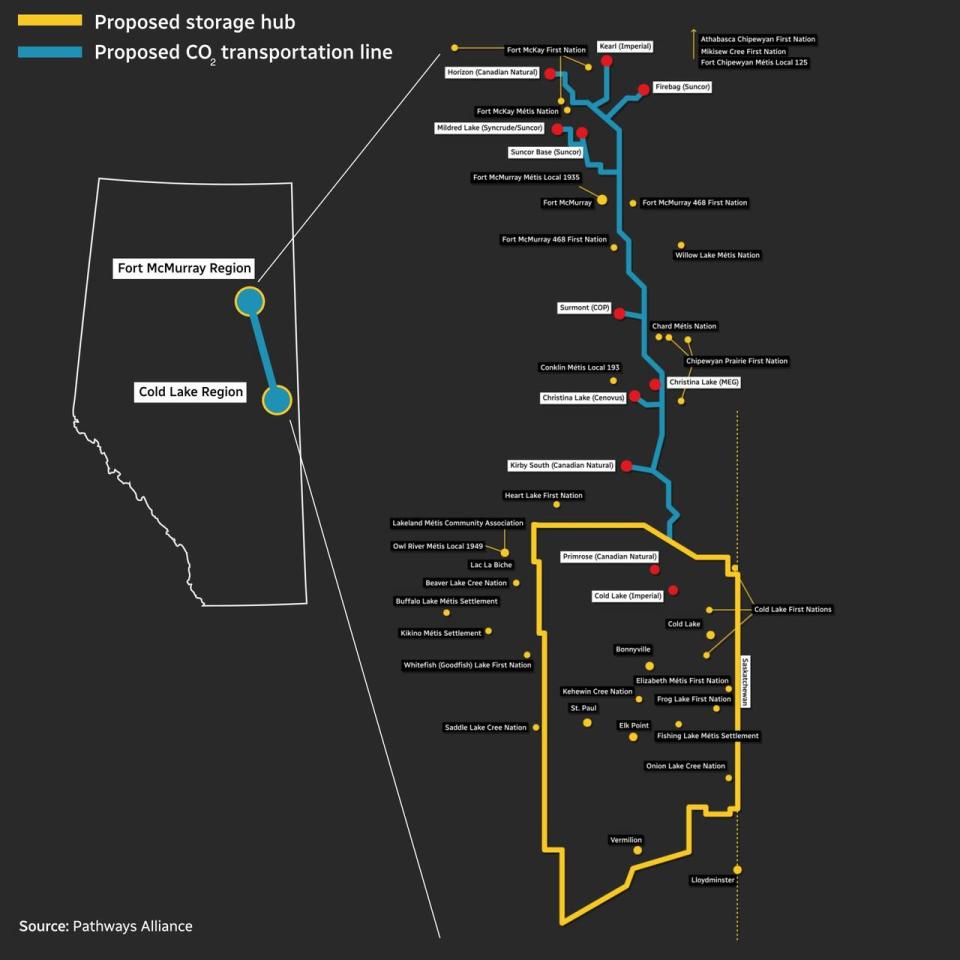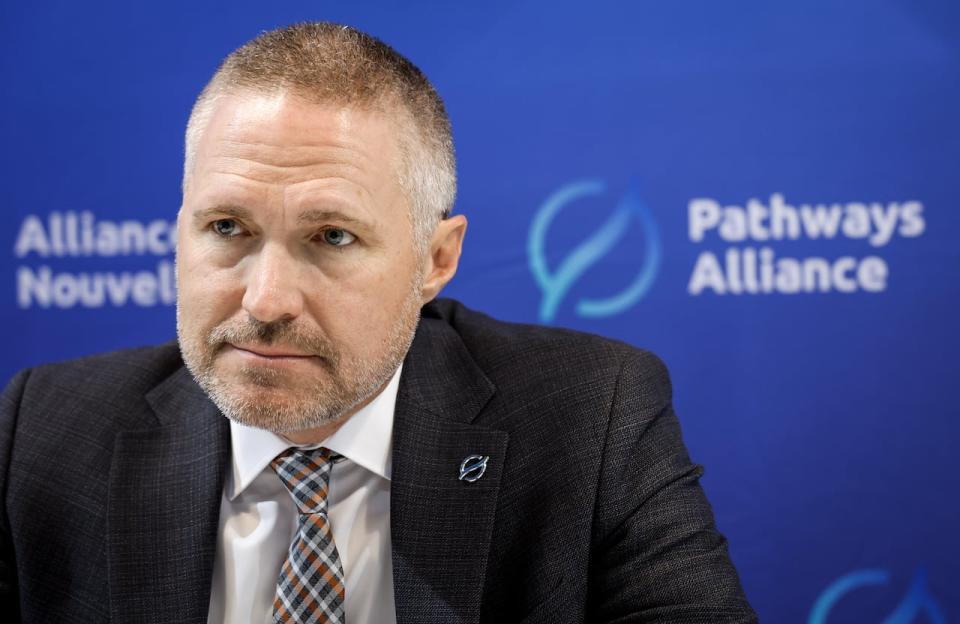Group asks for environmental impact assessment of Pathways Alliance carbon capture project

The Alberta government and the provincial energy regulator are being asked to order an environmental assessment for a massive carbon capture project being planned in the province's north.
The request, made by the environmental law charity Ecojustice on behalf of a First Nation and numerous other organizations, said an environmental impact assessment (EIA) is needed to ensure the $16.5-billion Pathways Alliance project will not have significant adverse impacts on the environment, communities and the rights of Indigenous peoples.
The letter from Ecojustice, sent Monday to the Alberta Energy Regulator (AER) and Alberta Environment and Protected Areas, is also asking for a public hearing on the project.
"We need to understand the environmental impacts of these projects before we say yes," said Phillip Meintzer, an Alberta Wilderness Association conservation specialist.
Along with AWA, the organizations petitioning with Ecojustice include the Athabasca Chipewyan First Nation (ACFN), the No to CO2 Landowner's Group, Environmental Defence, and the Climate Action Network.
Big carbon capture project
A consortium of six Canadian oilsands companies — Canadian Natural Resources Ltd., Cenovus Energy Inc., ConocoPhillips Canada, Imperial Oil Ltd., MEG Energy Corp. and Suncor Energy Inc. — is behind the Pathways Alliance project.
The consortium is proposing to capture carbon dioxide from more than a dozen oilsands facilities, compress it and transport it to a carbon storage hub in northeast Alberta. Hundreds of kilometres of pipeline would run between the Fort McMurray and Cold Lake areas.
The consortium says the project could help reduce emissions, and construction would create more than 100,000 full-time jobs in Alberta.

Pathways Alliance has proposed a carbon capture and storage project network between the Fort McMurray and Cold Lake regions. (Pathways Alliance/CBC)
However, the AFCN and environmental groups say they are concerned about water use, pollution and the risks of explosions and leaks.
Julia Levin, the associate director of Environmental Defence Canada, said Pathways Alliance sent the AFCN a table of its planned regulatory submission schedule, which included dozens of separate applications.
"It's a tactic that we often see oil and gas companies use — trying to split up project assessments so it's piecemeal and it misses the cumulative risks," she said.
Matt Hulse, an Ecojustice lawyer, said Alberta has the discretion to require an EIA, as well as an obligation to consult with Indigenous communities.
"It is possible for them to do without it, but we're suggesting that it's not good decision-making, it won't lead to an informed outcome and it undermines the ability of Indigenous communities to know what the impacts of this project will be on their rights," he said.
Worries of Indigenous communities
Indigenous communities have been vocal about wanting more information about the project and potential risks associated with it.
ACFN Chief Allan Adam said in a press release on Tuesday that the First Nation has been "seeking critical information" about the project for two years, to no avail, and the current regulatory process is preventing ACFN from making an informed decision on the project.
In an emailed statement, Pathways Alliance president Kendall Dilling said the consortium is proactively consulting and engaging with all interested parties to understand their concerns.
He said there are ongoing environmental field studies and the consortium is supporting communities in completing traditional land use studies.
Ryan Fournier, press secretary for the environment and protected areas ministry, referred comment to the AER.

Pathways Alliance CEO Kendall Dilling says the consortium is engaging with interested parties about the project. (Jeff McIntosh/The Canadian Press)
Impact report may be required, says AER
AER's spokesperson, Coral Hulse, said the Pathways Alliance project is a discretionary activity under the provincial regulation and an EIA report may be required.
She said under the oil and gas regulatory framework, a carbon capture and storage project is not a single application and the regulator requires different applications for various component parts.
When determining whether to conduct a public hearing, the regulator will consider statements of concern, which are written concerns about an energy development filed with the AER, and factors outlined in legislation, Hulse said.
Andrew Leach, an energy and environmental economist and a professor at the University of Alberta, said the battle over the project isn't really about the environmental assessment.
"Carbon capture and storage is a solution that allows the continued production and expansion of the oilsands while keeping Canada's emissions in check," he said.
"But I think people are fundamentally concerned about continued oil extraction and continued federal and provincial money going toward oil extraction."

